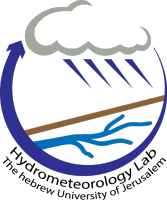Date Published:
10Abstract:
The evaluation of erosion risk in dry areas is challenging because erosion is often an outcome of individual rainstorms and is highly dependent on rainfall spatiotemporal patterns and on local land-use and topography. This study integrates a hybrid erosion model with rainfall data from high-resolution weather radar to simulate soil erosion during 22 high-intensity flash-flood generating rainstorms in a Mediterranean watershed (69 km2). We examine erosion over individual hillslopes and their spatial average over the watershed, representing intra-watershed and watershed-scale erosion, respectively. Our objectives are to: (a) determine how intra-watershed erosion corresponds to various physiographic factors (rainfall, land-use, topography); (b) determine which of these factors contributes to intra-watershed erosion the most; (c) quantify the effect of temporal variations in rainfall intensities on storm-scale erosion in relation to land-use type. We use for the first time a hybrid erosion model (K2-RHEM-DWEPP) based on the watershed-scale KINEROS2 model, that integrates the hillslope-scale Dynamic WEPP (DWEPP) and RHEM models, which were individually developed to represent erosion processes in croplands and rangelands, respectively. Watershed-scale storm erosion is best correlated with spatially-averaged 10-minutes maximum intensities (R2 = 0.58), and the correlation decreases for longer durations (R2 ≤ 0.54). When the spatially-averaged 10-minutes maximum intensity is multiplied by the area that contributes sediment, a better correlation with watershed-scale erosion is observed (R2 = 0.75). Hillslope erosion rates are higher when both rainfall intensities and topographic slopes are high, while land-use has a second-order effect. Higher storms maximal intensities result in higher hillslope erosion rates, especially over croplands. Our conclusions are useful to target locations for conservation practices and to better understand the effects of climate change on soil erosion.
